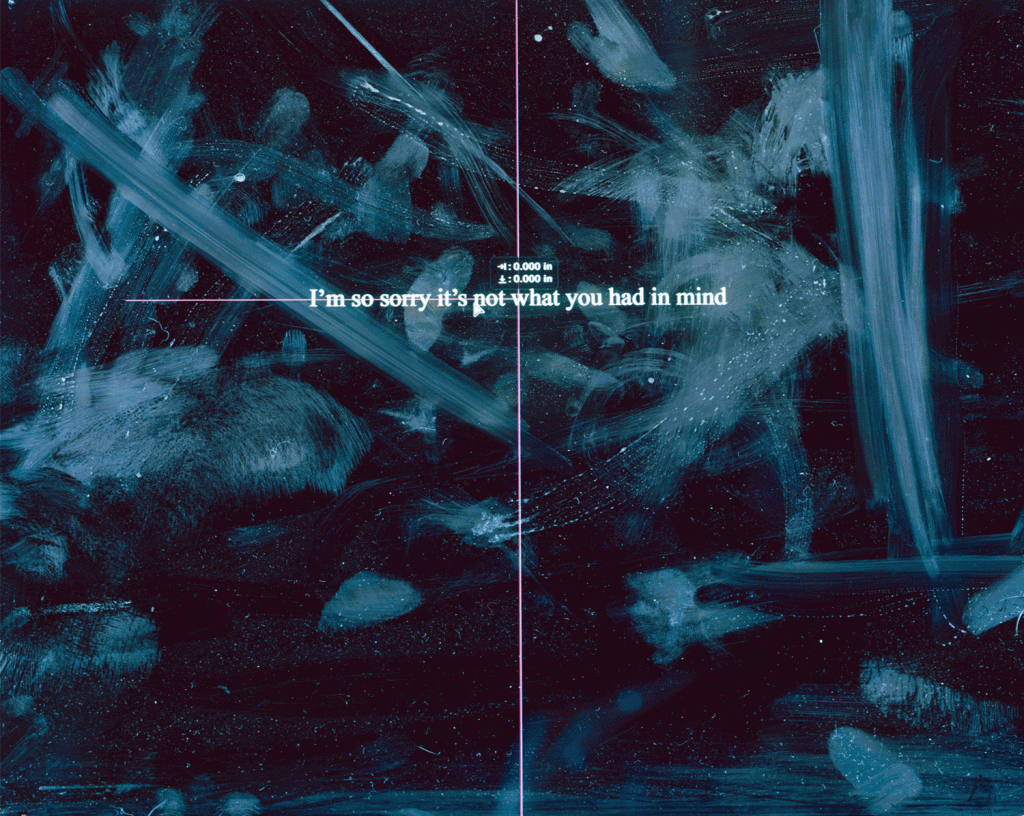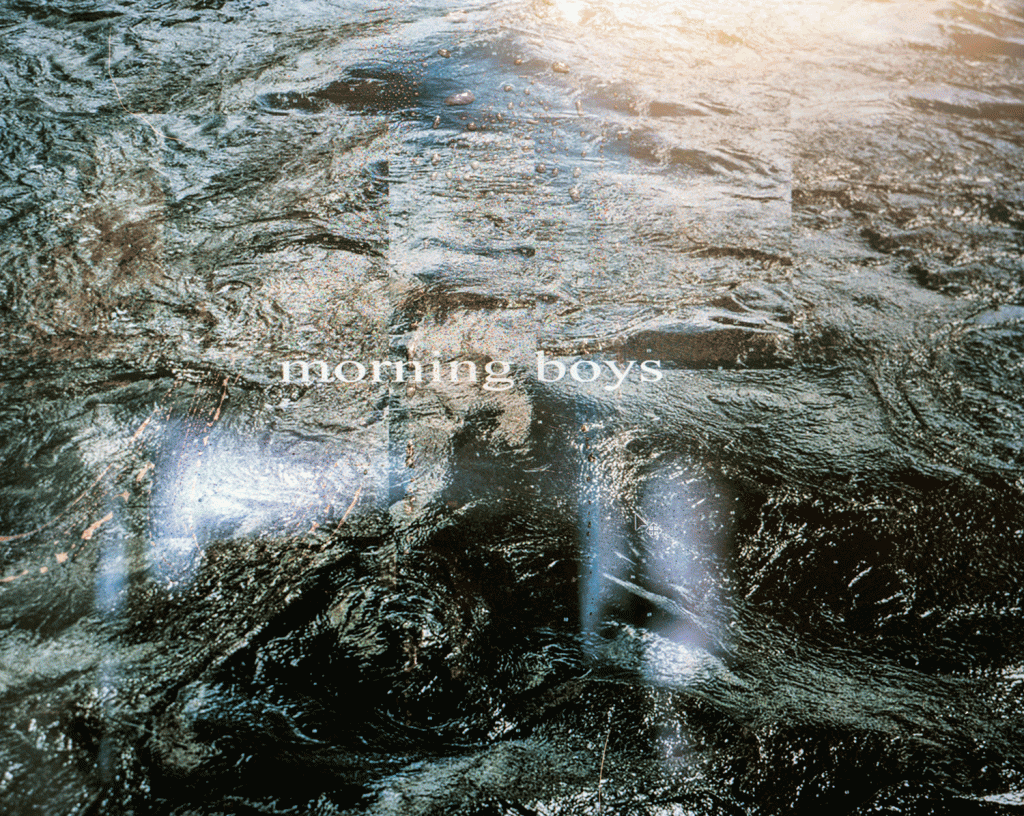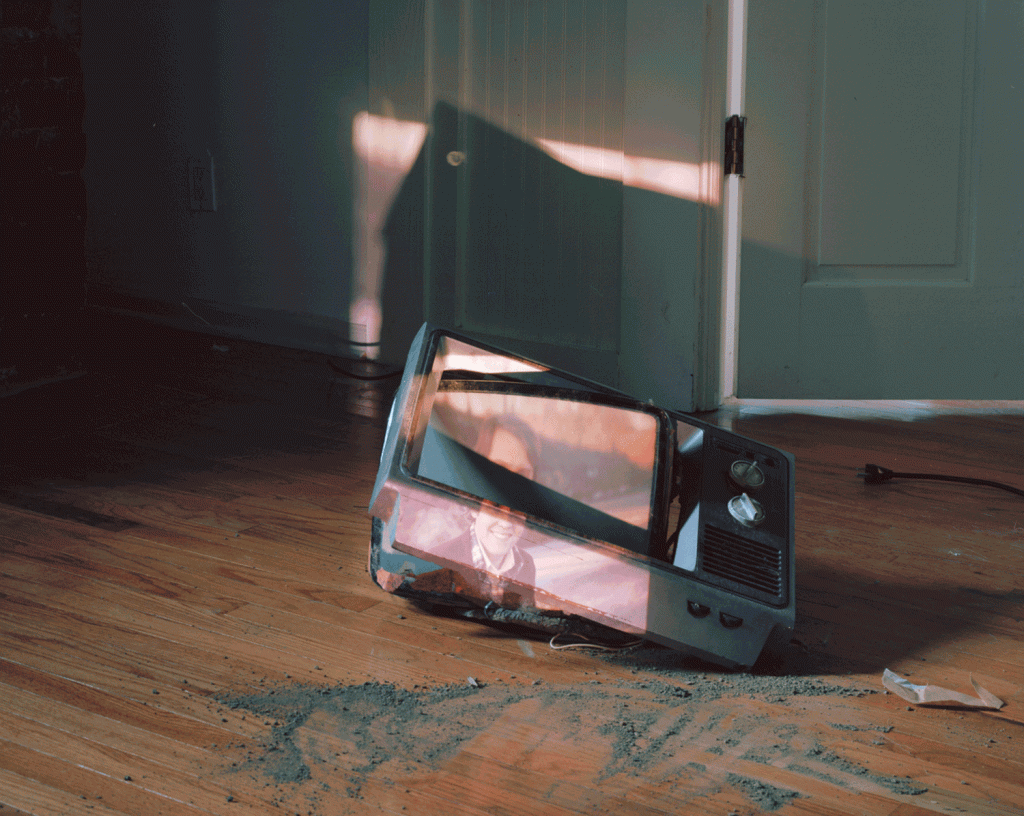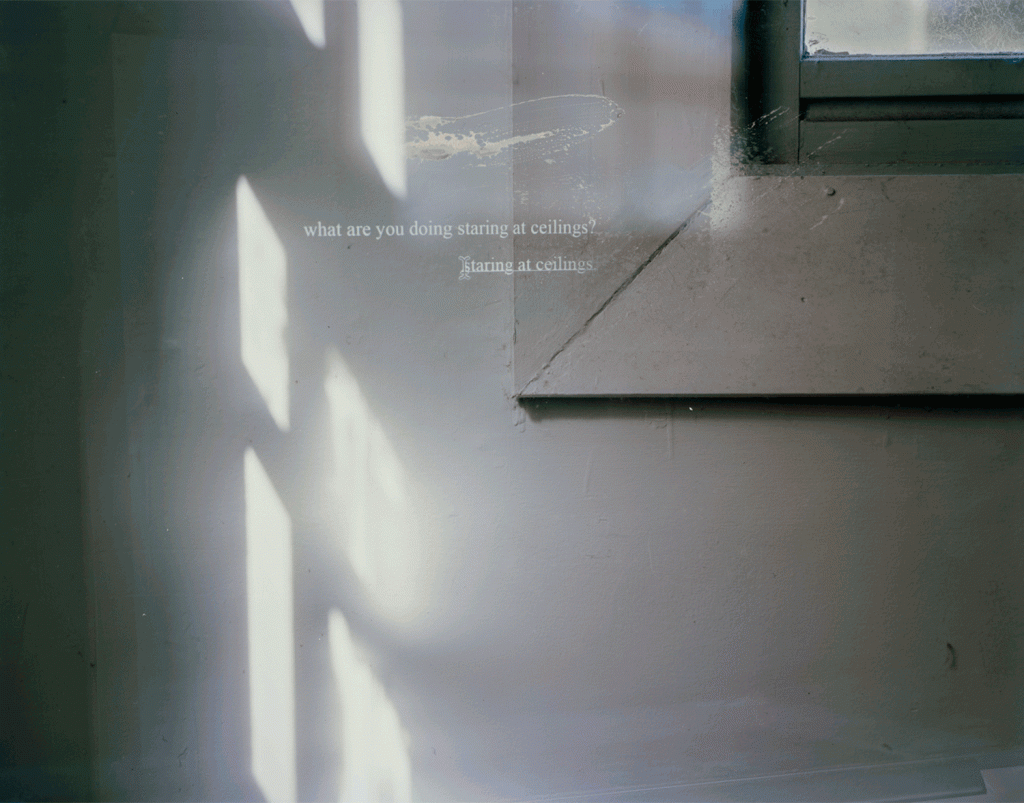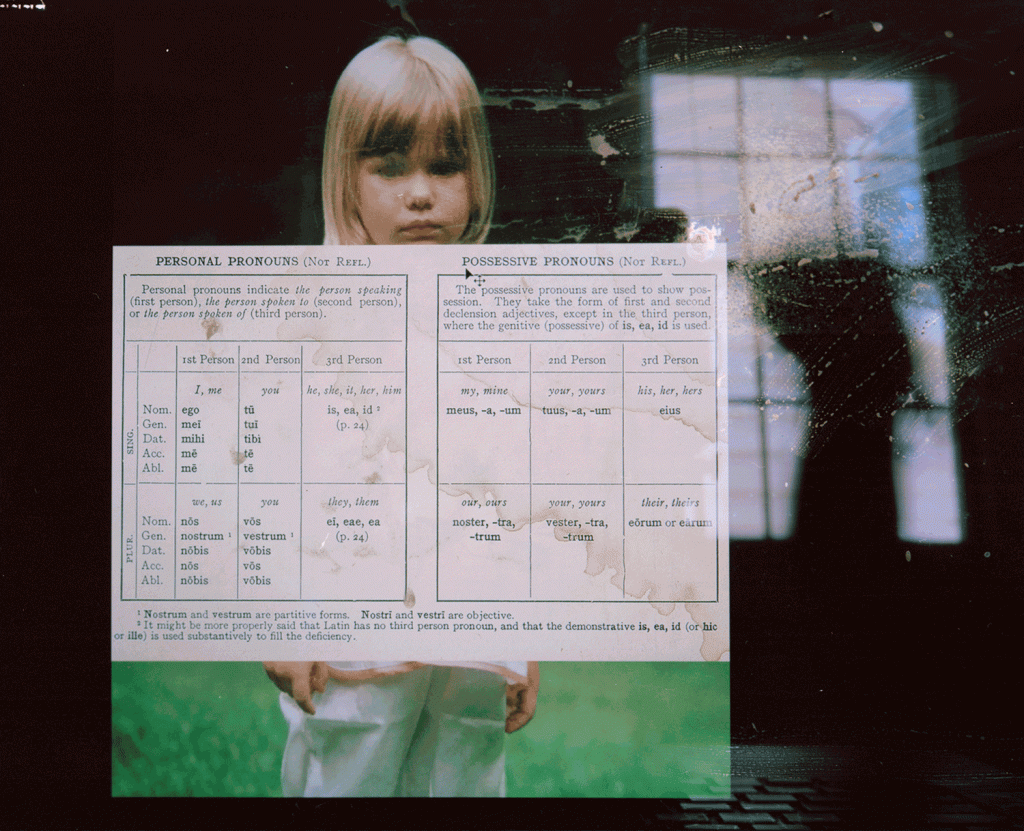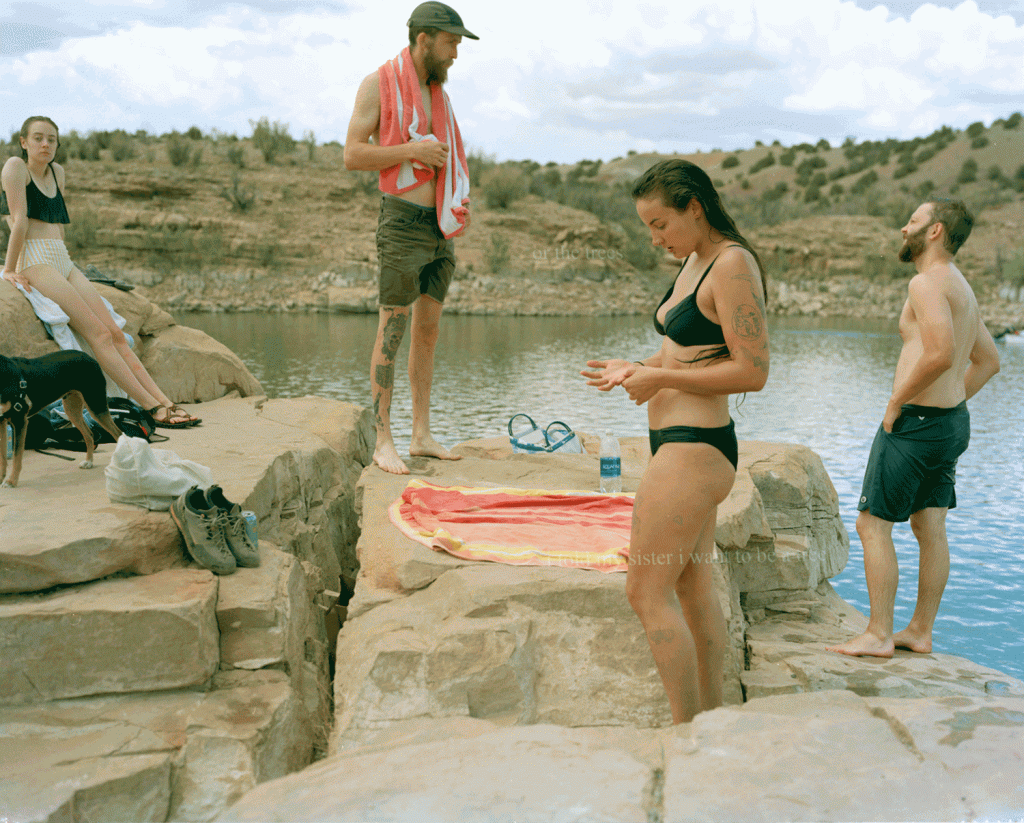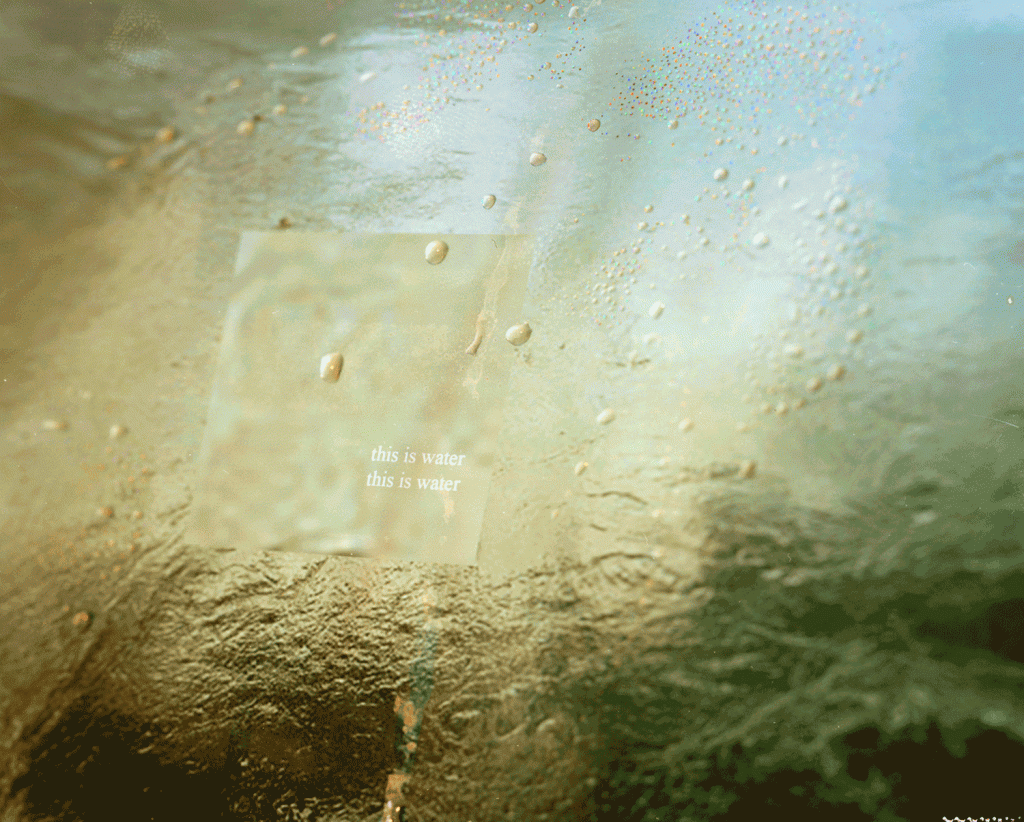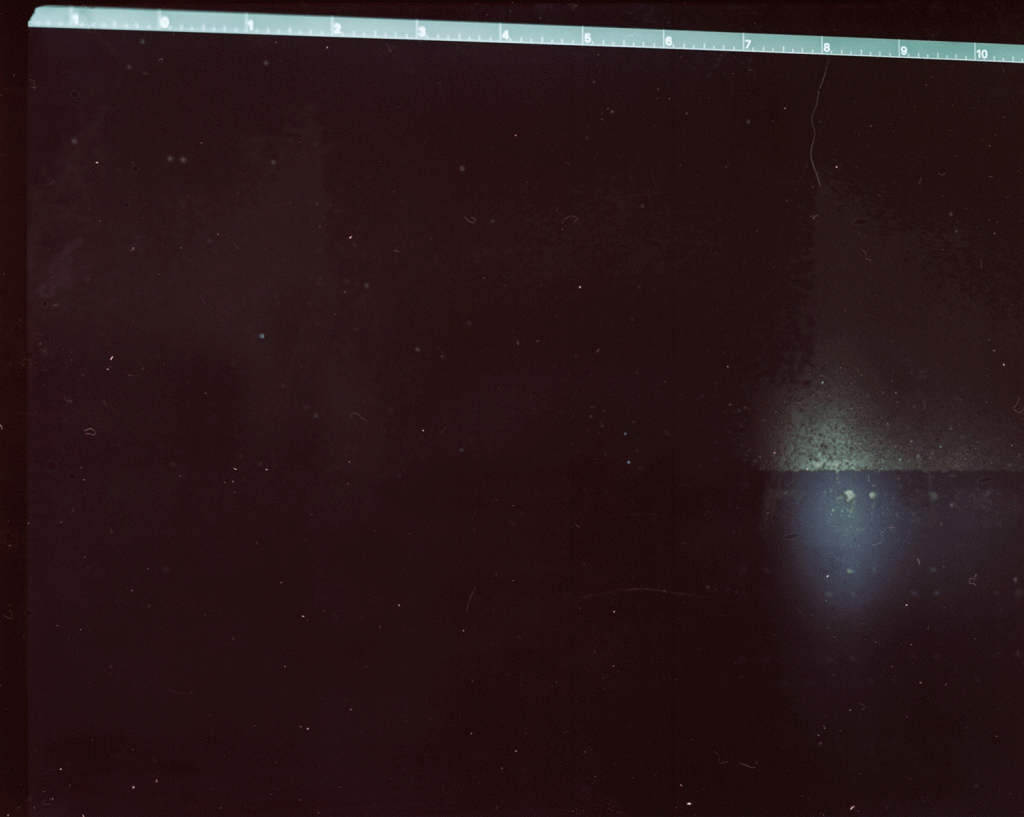Julia Wilson is a photographic artist, who explores our relationship to, and the relationship between, text and image, and photographic materiality within the technological age.
Using the large format view camera, Julia photographs constructed compositions the screen of her personal computer. Julia received a Bachelor of Arts in Classical Studies with a concentration in Latin and Ancient Greek translation from the University of Virginia and her Master of Fine Arts in photography at the Savannah College of Art and Design. She is currently a writer for Aint-Bad Magazine, and lives in Minneapolis, MN.
Christian Michael Filardo: Your work seems so much about identity; can you elaborate on this? Who are you? Where are you from? What are you doing?
Julia Wilson: Walker Percy in his mock self-help book, Lost in the Cosmos, wrote that man is most unknowable to himself. (This might be a true paradox when you think about it, considering we are constantly and only and always present with ourselves.) For example (and if you know me personally, I’ve probably presented this scenario to you more than once): You are Christian Michael Filardo, Interviewer, to me, and I am Julia Wilson, Interviewee, to you. But nevertheless, we are not those things to ourselves. We can only understand our own infinite complexity, recognizing the inability to define it with words… I’m telling you this little confusing ditty to give you a window into how much I realize I don’t know on the very subjects and concepts I explore. That said, I can tell you that I am 26-year-old female, who studied classical language and translation at the University of Virginia, and just recently received an MFA in photography from the Savannah College of Art and Design. I use photography to explore text and image in contemporaneity, and the ways they come together to give meaning.
The speech This is Water by David Foster Wallace and the essay Create Dangerously by Albert Camus have been the biggest influences on not only my work but my life, and I tell every young artist to read them. And so, listed above remain facts about me but the jury is still out on who I am. I’m also much goofier than I portray in my writing.
CMF: Julia, when I view your work I feel as though there is a sense of something being askew. Not quite an error or an incompleteness but a feeling of something unhinged. Can you speak to your thoughts on failure, error, and mistake?
JW: Definitely. A little more on my background – My father, who is a Professor of Philosophical Theology at the University of Virginia, showed me this quotation by William Faulkner during a particularly hard time in grad school when I was seriously questioning the validity, purpose, and importance of my art practice. It stated:
“All of us have failed to match our dream of perfection. I rate us on the basis of our splendid failure to do the impossible. If I could write all my work again, I’m convinced I could do it better. This is the healthiest condition for an artist. That’s why he keeps working, trying again: he believes each time that this time he will do it, bring it off. Of course, he won’t.”
So, I started to think about the term Splendid Failures – the eponymous title for my most recent exhibition. It works for me in multiple ways. One being that I choose to make visible those very photographic elements we, as photographers, normally try to avoid, hide, or fix – that being film imperfections, mistakes, marks –much like the act of cleaning our computer screen. It seems today in our informational deluge that photographs have become self-contained windows to reality, just as we look at the screen as infinite space; the materiality has been forgotten, its context obliterated. I believe the suspension of our reality is disrupted when the surface becomes visible by means of error, by means of those elements that we look through and never at. I think
this is what draws me to the materiality of a film capture of a digital surface, and “imperfections” from multiple layers flattened into a final composition.
This idea of a splendid failure also works for me in another vein: simply that we as artists will never be able to create work exactly as we see it in our heads, but that is what keeps us going. I think about Keats’s “Ode on a Grecian Urn” or the Marlin from “Old Man and the Sea.” My best work (in my eyes) is always the work that I didn’t expect. It’s always the work were an “error” beat out perfection.
CMF: Yes, in a way we are dragging our art through the ocean back to shore! The result when it reaches land is so different than that of the moment we caught it. Can you speak more to material context, and the subject of materiality in your work? I’m curious, what are your thoughts on the idea of “illusion and magic” in the photographic practice? Are you revealing it all or are you showing us the imperfections in order to say something else?
JW: To begin my spiel – I’ll tell you my technical process, which is, in the end, pretty rudimentary. Using the large format view camera, I photograph words, images, reflections, and grit, on my personal computer. As a result, the images emphasize the gradual degradation of its surface overtime – what we usually consider infinite space, becomes visibly finite.
So, I’m going to talk a little about how I believe the photograph is viewed in contemporaneity: a window to the world, rather than an abstracted re-presentation. Computer technologies and mass interconnectivity have rendered images infinitely reproducible, cheap, accessible, and culturally ubiquitous. And as photography has become more accessible, user-friendly, and more ‘realistic’, its uses in the world have changed. To give a foil, unlike the daguerreotype process that was largely dictated by what was photographed and how it was seen (i.e. iconic portraits and staged scenery), and a viewing event in itself, photography gained the ability to record almost any situation as the wielder of the camera desired (I refrain from using the term ‘photographer’ due to its accessibility). In consequence, the camera became a tool to document and share our everyday experiences. The consumption and creation of images have become inextricably intertwined within our daily lives, and optical advancements have made resulting images almost indistinguishable from what we see with our eyes.
We are caught in a sea of imagery in the everyday—on billboards, cell phones, television, in family albums, and so on—and this evidence is the utilitarian adoption of photography by the general public. Nevertheless, as we adapt to survive in this ocean of images, not only do the images lose themselves in the world they represent, but we as viewers forget we are breathing underwater. When surfaces are forgotten so is the photograph itself, or the photograph as representation, the photograph as something to be deciphered.
Photographic digitization has made the ease of image transfer virtually unnoticeable from surface to surface, platform to platform, screen to screen, and so on, yet it’s no secret that the same story or same image can convey two totally different meanings based on how it’s presented (think CNN versus Fox News). This is why I choose to make visible those things we overlook in deference to the photograph’s illusion.
CMF: Interesting, I find there to be a complex dimensionality here. How do you go about selecting the text that appears on the screen that you photograph? Arguably, the process seems to be something that occurs at a slow pace. Does the tumultuous process of using the large format camera add to your dissection and to the materialization of your work?
JW: The meaning of my work is seated in our relationship to and the relationship between text and image – how we are accustomed to processing the two together, and how we can rethink that system. Thomas Merton’s anti-poetry and playwrights like Brecht and Beckett, as well as Kafka were huge influences, which directed my thoughts on language; how we can estrange the apparent familiarity of language by means of breaking it down and re-contextualizing it. And photography’s role within a society which is slowly becoming predominantly image-based (this could be argued conversely).
I guess in this process I am trying to show the different and disparate ways we are able to process or interpret experience (from words and images, etc.) based on our own unique ideologies, or the veil through which we view all reality. How the same event can be experienced in two completely different ways based on someone’s background. So, in the end my work becomes about unique experience. It’s about you and it’s about me, and how experience is made up of words and images merged together, ultimately giving meaning.
And so, the text in the images all come from moments of my life, fragmented and reformed into an alternate way to relay that experience – but I would never want its interpretation to be confined to that. And my process is fluid, and always changing, as far as how I pair text with certain images + reflections + surface. Sometimes I wish I could work in a more systematic or automated way, but I think if I did my work might end up being repetitive or boring (and maybe you think it already is). I wish I could tell you hard and fast reasons why I choose to make certain compositions, but sometimes it’s something that has been in my head for months, and sometimes it comes together moments before (sometimes during) the exposure.
That said, the large format camera has made me a more thoughtful photographer. It also gives me an incredible amount of control. The final prints are large-scale. I find there to be an interesting dialogue (excuse annoying art phrasing) between the digital screen surface, the apparent depth, and the film surface with the inevitable imperfections that come with it. I couldn’t make my images with any other apparatus (I’ve tried). I have annoyingly fallen in love with the process itself.
CMF: Can you describe an experience that has changed your life? Art or other? How it has influenced you? How many different languages do you speak?
JW: There hasn’t really been one defining moment that has shaped my work, but rather looking back I see how minute factors and unconscious decisions have led me to the place I am now. For example: I wanted to be pre-med in undergraduate school, but quickly realized I would be a terrible doctor. And my eventual pursuit of Classics and language only became intertwined in my visual art practice in grad school – with the help of some incredible mentors. As far as language, I translate and read Latin and Ancient Greek, but Italian is the only Modern language I’ve studied in higher ed. I think my infatuation with ancient or “dead languages” (as they say) speaks to my interest in language as a thing in itself rather than something for mere utility – as I see
photography.
CMF: Would you describe your work as romantic? Do you fear death?
JW: In the modern sense of the word, I would not refer to my work as romantic. And mortality is something I can only afford to contemplate every 3rd Wednesday at 5pm (pause for chuckle)
CMF: Haha fair enough! What’s next for the work? Any travel plans? Shows coming up?
JW: I’ve recently been collaborating with my partner who is also a photographer, William Glaser (www.williamglaser.com). We’ve been traveling together for a photo project he’s doing on RV parks, and while I fully support his endeavors, I simultaneously work on my own. I have work in a show here in Minneapolis at Gamut Gallery, which opens Oct 27th, and I just returned from Louisiana after giving a lecture on text and image today for SPESC. I will also be a portfolio reviewer be at the 2019 SPE National conference. Other than that, just doing the day to day to make rent, continuing to make work, reading, and working toward the next step.
CMF: This is all wonderful, anything else you’d like to share with our readers?
JW: Just that I’m honored to be featured among the amazing artists on your site, and I admire so much your mission to share the work of young, passionate, contemporary artists. I am so thankful to have the opportunity to talk with you. I hope any and all people who read this will reach out, say hi, send an email, carrier pigeon, what have you! Because I am always looking to expand my artistic circle! Thanks again, Christian Michael! You’ve been truly amazing to speak with.
–
website: Julia Kier Wilson
Instagram: juliakier
Facebook: Julia Wilson
–
copyright © Julia Kier Wilson and PHROOM, all rights reserved
–

